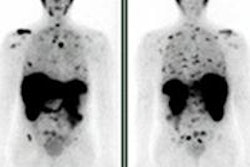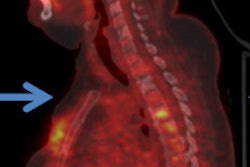
VANCOUVER - The use of radiopharmaceuticals and nonradioactive interventional drugs remains "remarkably safe," even as the number of PET procedures increased 30% over the same five-year period, according to a study presented on Sunday at the Society of Nuclear Medicine and Molecular Imaging (SNMMI) meeting.
Between 2007 and 2011, only 22 adverse events were reported from 1,024,223 radiopharmaceutical doses, translating to a frequency of 2.1 incidents per 100,000 injections. Of those 22 adverse events, 15 fulfilled the criteria for probable or possible adverse events on the study's probability rating scale, for a prevalence of 1.5 incidents per 100,000 doses.
"Radiopharmaceuticals are very safe; they are developed so they are not supposed to have pharmacological effects," said lead author Dr. Edward Silberstein, professor of radiology at the University of Cincinnati Medical Center. "We have shown in the '90s and now in this decade that regardless of the [imaging] center and regardless of the technologist, we get the same results."
Silberstein and colleagues culled quarterly adverse event reports submitted by 13 large U.S. medical centers over the five-year period, analyzing data on adverse events and the number of doses administered for PET, non-PET, and radiopharmaceutical therapy, with additional information on the use of bone imaging and FDG.
Three adverse events were deemed unlikely to have been caused by radiopharmaceuticals. In addition, three reported adverse events resulted from 112,830 nonradiopharmaceutical doses, for a prevalence of 2.7 incidents per 100,000 cases.
| No. of adverse events from radiopharmaceuticals | |||||
| Year | Reporting institutions | Adverse events | Doses administered | ||
| 2007 | 13 | 7 | 214,930 | ||
| 2008 | 13 | 5 | 223,522 | ||
| 2009 | 13 | 4 | 208,253 | ||
| 2010 | 12 | 3 | 192,908 | ||
| 2011 | 11 | 3 | 184,282 | ||
The most common adverse effects were rash, feeling flushed, or nausea. There were no hospitalizations or deaths related to the incidents.
"I think the data is particularly valuable when we approach government agencies about regulation and onerous rules regarding the use of radiotracers," Silberstein told AuntMinnie.com after his SNMMI presentation. "They are really, really safe."
The research also found that during the five-year study period, PET procedures increased annually by approximately 30%. PET comprised approximately 17% of radiopharmaceutical procedures in 2007, compared with 26% by 2011.
The use of FDG in PET scans decreased over the study period, from 85% of procedures in 2007 to 80% on 2011. "As a percentage of all PET imaging, FDG has gone down as other radiopharmaceuticals become available," Silberstein added. "FDG still dominates, but it is interesting that it isn't 95% of what we do."
Non-PET procedures decreased by 16% during the five-year period, including bone scans, which declined by 14%. In addition, the number of therapy procedures decreased for the first time in 2011.




















